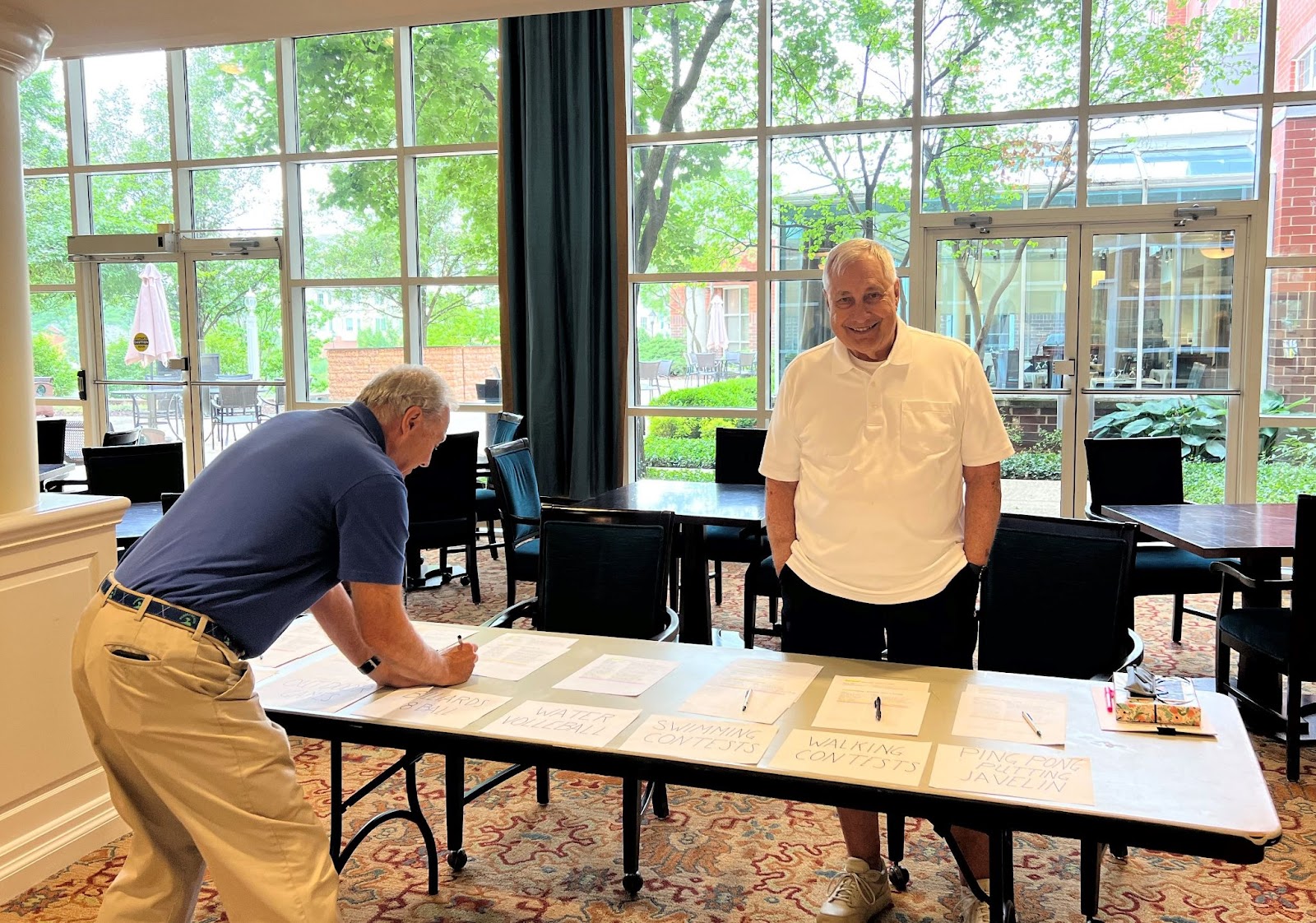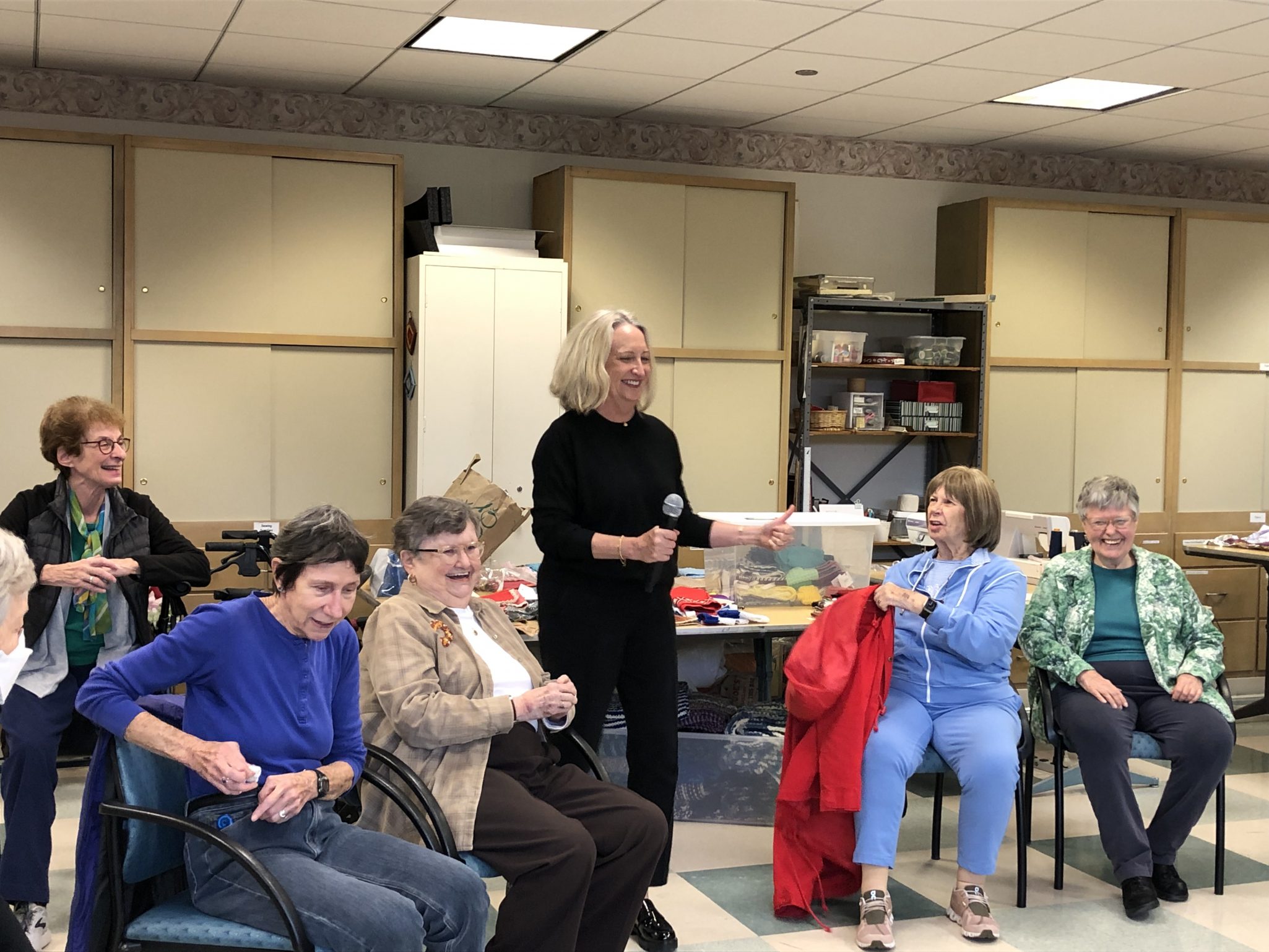When a Loved One Doesn’t Know They Have Dementia: Understanding Anosognosia

Anyone who has cared for a loved one with dementia knows how challenging it can be. But add in the element of the person not understanding their limitations, and the stage is set for even more difficulty. Family members can easily become overwhelmed.
We’re here to help explain what to do when a loved one has what’s referred to as “anosognosia dementia” and ways you can respond to it.
What is anosognosia?
Anosognosia is a medical term used to describe a lack of awareness or insight into one’s own condition or illness. It often occurs in individuals with various forms of dementia, including Alzheimer’s disease. When anosognosia is specifically associated with dementia, it is referred to as anosognosia dementia. Statistics show that up to 98% of those with dementia also have anosognosia.
Anosognosia dementia refers to the inability of individuals with dementia to recognize or acknowledge their cognitive impairment. They may be unaware of the memory loss, language difficulties, disorientation, and other cognitive deficits associated with their condition. This lack of awareness can be challenging for both the people with dementia and their caregivers. It may lead to difficulties in accepting the diagnosis, seeking appropriate care, and following treatment plans.
Anosognosia dementia is believed to result from damage to certain areas of the brain that are responsible for self-awareness and insight. The exact mechanisms underlying this condition are not yet fully understood. Researchers suggest that it may involve the dysfunction of neural networks involved in self-monitoring and self-evaluation.
It’s important to note that anosognosia dementia is different from denial or simply forgetting. Denial involves a conscious refusal to accept or acknowledge a problem, whereas anosognosia is characterized by a genuine lack of awareness that is not under the person’s control. Anosognosia is rooted in neurological changes rather than a deliberate choice to ignore or deny the condition.
How to respond to anosognosia
Dealing with anosognosia dementia can be challenging for caregivers, as they may need to make decisions on behalf of the individual who lacks insight. The below strategies can be helpful in navigating the condition:
- Offer gentle reminders when needed
- Validate what they can safely do
- Engage in activities together
- Maintain a supportive environment
- Consider a memory care community
Collaborating with healthcare professionals who specialize in dementia care is crucial for developing personalized care plans that address the specific needs of individuals with anosognosia dementia.
It’s worth mentioning that research on anosognosia dementia is still ongoing, and healthcare providers continue to explore new approaches to address this complex condition.
The four main types of dementia
When dealing with a dementia diagnosis, most people immediately think of Alzheimer’s disease, but it’s important to remember there are other types of dementia, and each one operates slightly differently.
- Alzheimer’s Disease: Alzheimer’s disease is widely known and the most common form of dementia. It is characterized by the accumulation of amyloid plaques and tau protein tangles in the brain, leading to the progressive degeneration of brain cells. Alzheimer’s typically begins with memory loss and cognitive difficulties, eventually affecting language, reasoning, and daily functioning.
- Vascular Dementia: Vascular dementia is caused by reduced blood flow to the brain, often due to a stroke or other cardiovascular conditions. The cognitive decline in vascular dementia can vary depending on the location and severity of the brain damage. Symptoms may include problems with judgment, decision-making, attention, and executive functions.
- Lewy Body Dementia: Lewy body dementia is characterized by the presence of abnormal protein deposits called Lewy bodies in the brain. It shares some symptoms with both Alzheimer’s disease and Parkinson’s disease. People with Lewy body dementia may experience visual hallucinations, fluctuations in attention and alertness, motor difficulties, and cognitive decline.
- Frontotemporal Dementia: Frontotemporal dementia (FTD) refers to a group of disorders characterized by the degeneration of the frontal and temporal lobes of the brain. FTD typically affects behavior, personality, and language skills. FTD is less common than Alzheimer’s disease but tends to occur at a younger age. This has been in the news recently as Bruce Willis was diagnosed with this form of dementia.
Dementia is a broad term encompassing various conditions that cause cognitive decline and impairment. While these four types are the most common, there are other forms of dementia, such as Parkinson’s disease dementia, mixed dementia (a combination of different types), and less common types like Creutzfeldt-Jakob disease and Huntington’s disease.
Each type of dementia has its own distinct characteristics, progression, and underlying causes. Proper diagnosis by a healthcare professional is crucial for determining the specific type of dementia and developing an appropriate treatment and care plan.
As dementia progresses, people with anosognosia need support and understanding. That’s where we come in.
The Highlands Memory Care at Lake Forest Place is here to help.
The Highlands Memory Care at Lake Forest Place is a beautiful and specialized environment specifically designed to meet the needs of our residents with dementia. It’s our honor to take care of your loved one, ensuring they are happy, healthy, and well supported with the therapies we offer. Call us at 847-423-6679 to schedule a tour and see for yourself what a warm and welcoming place The Highlands is.



